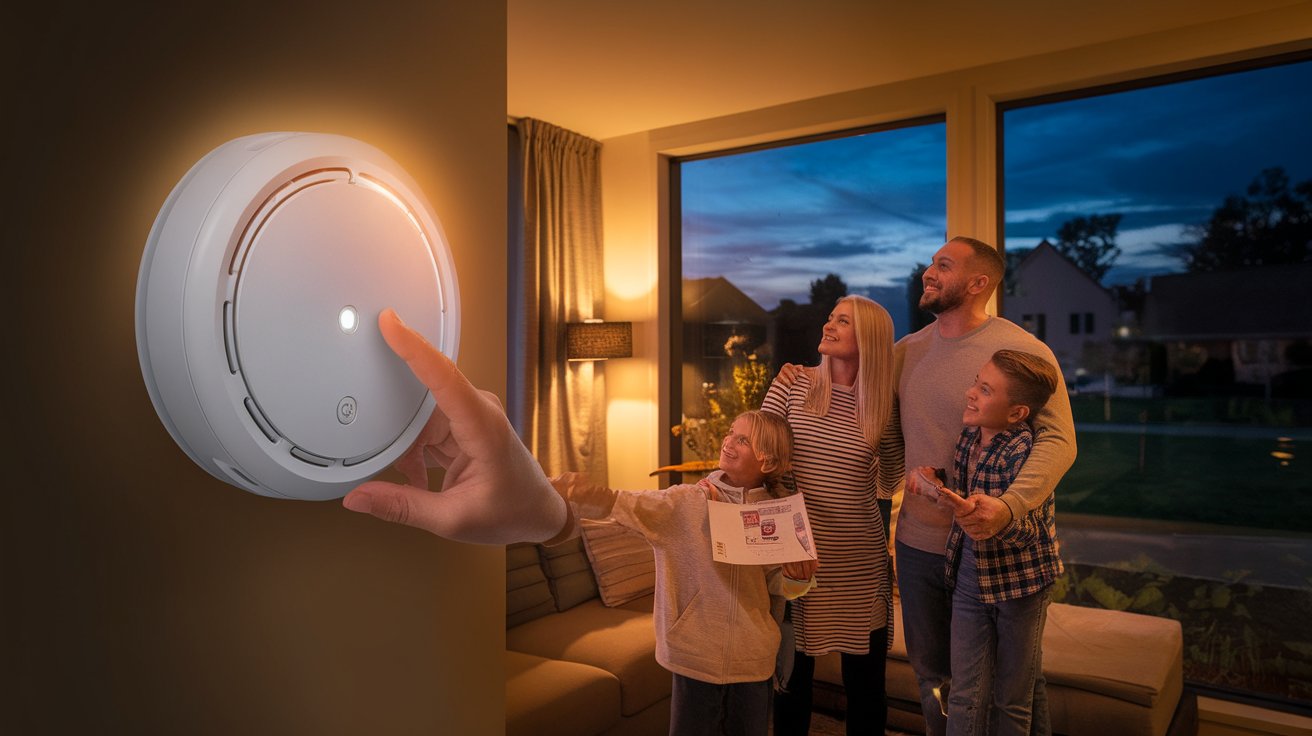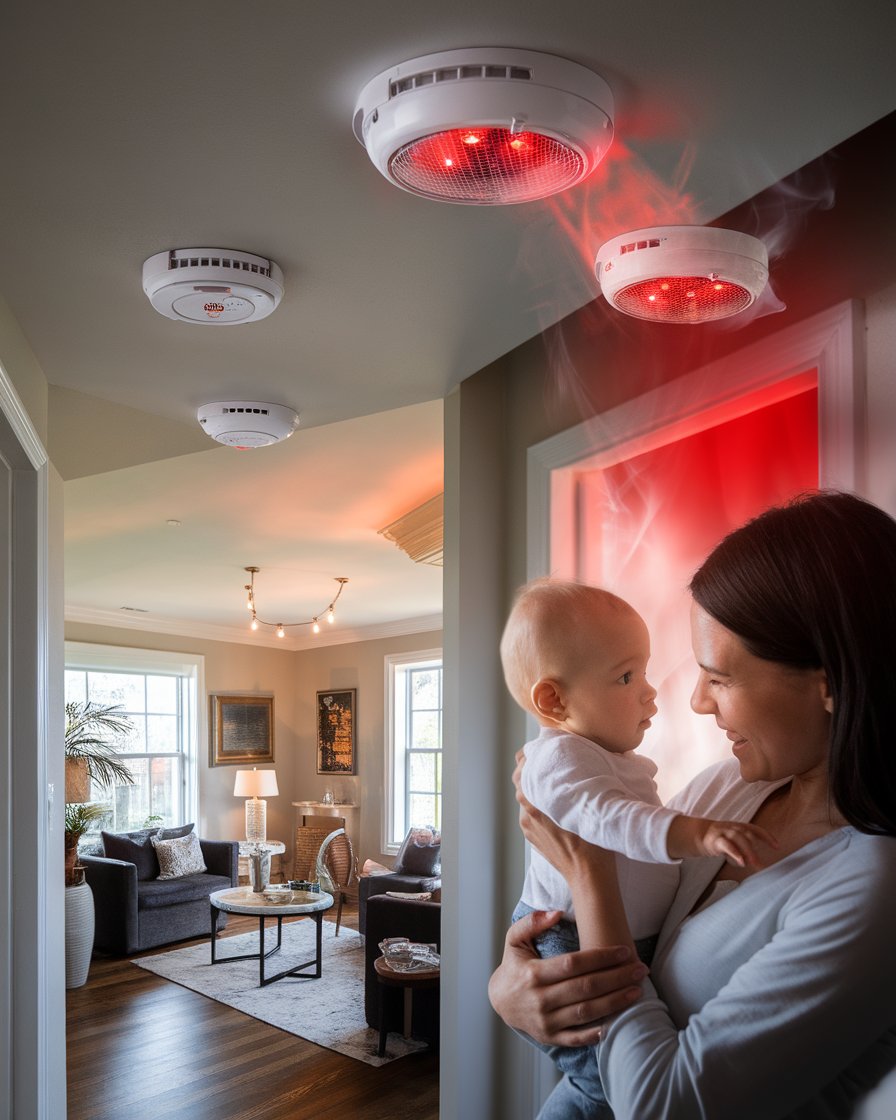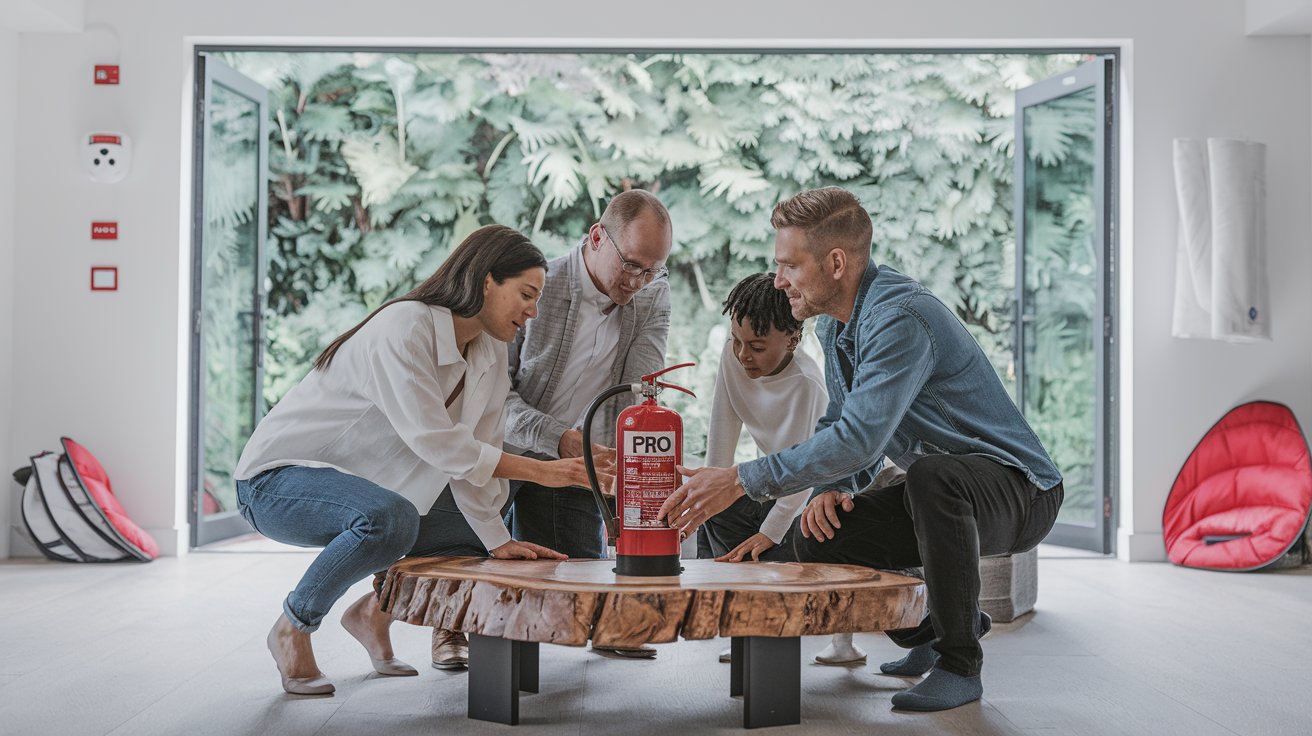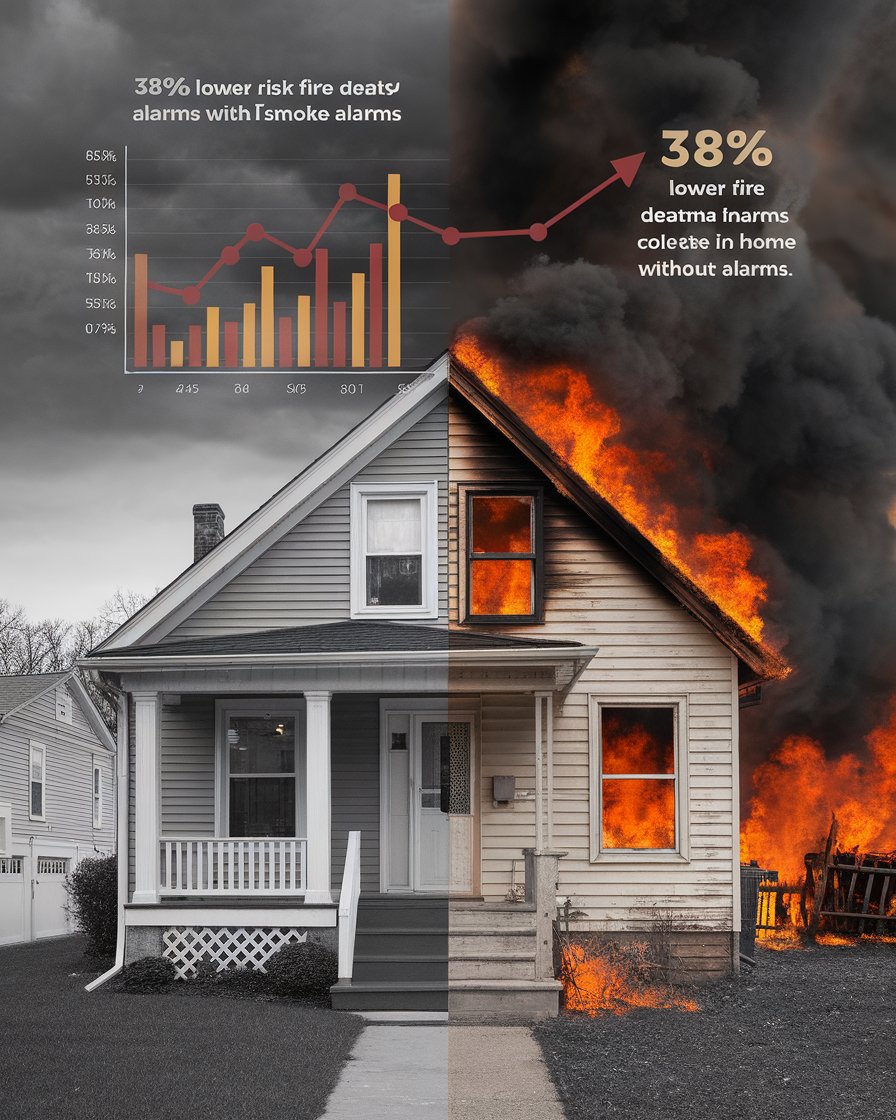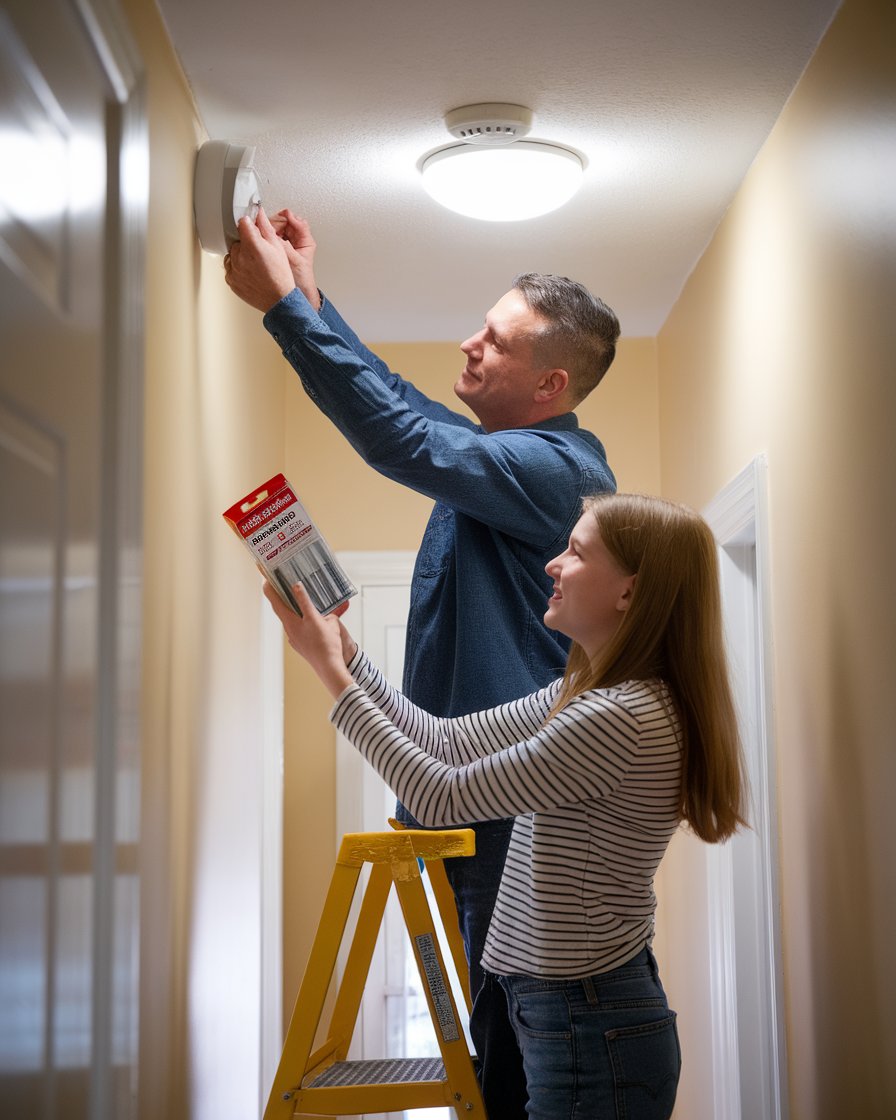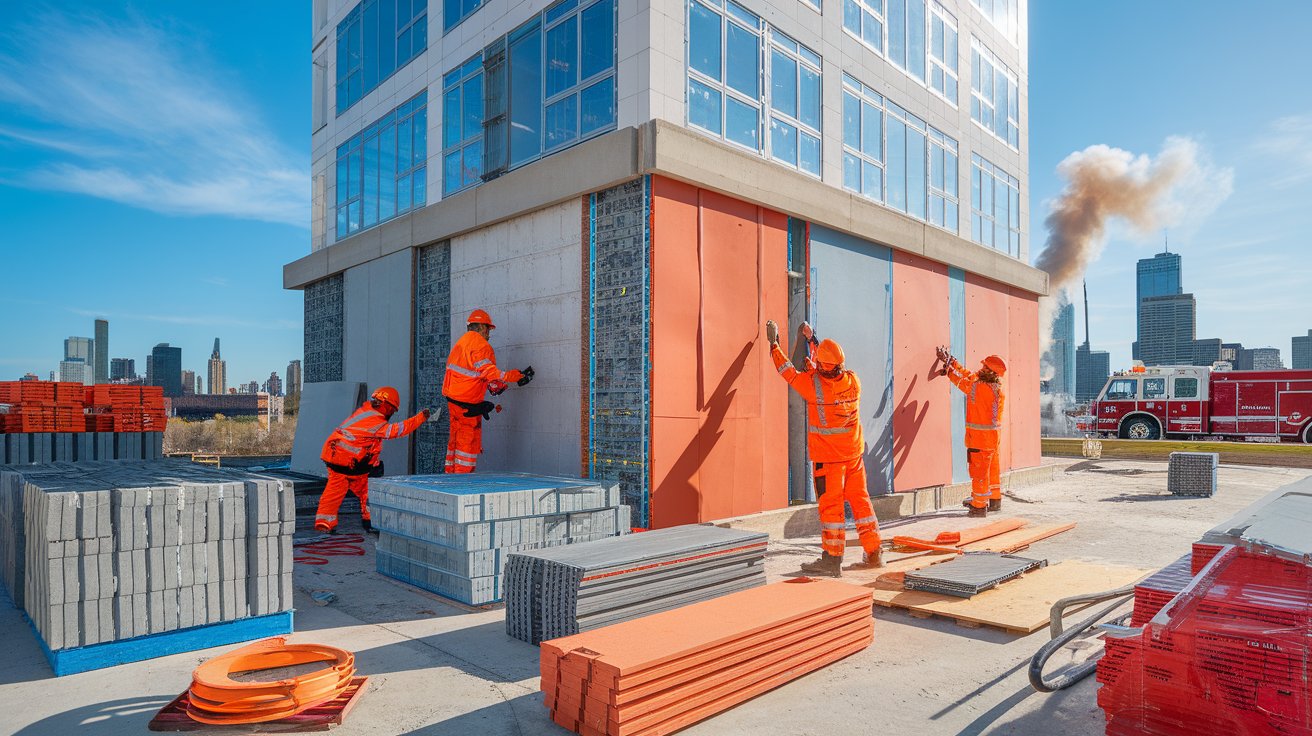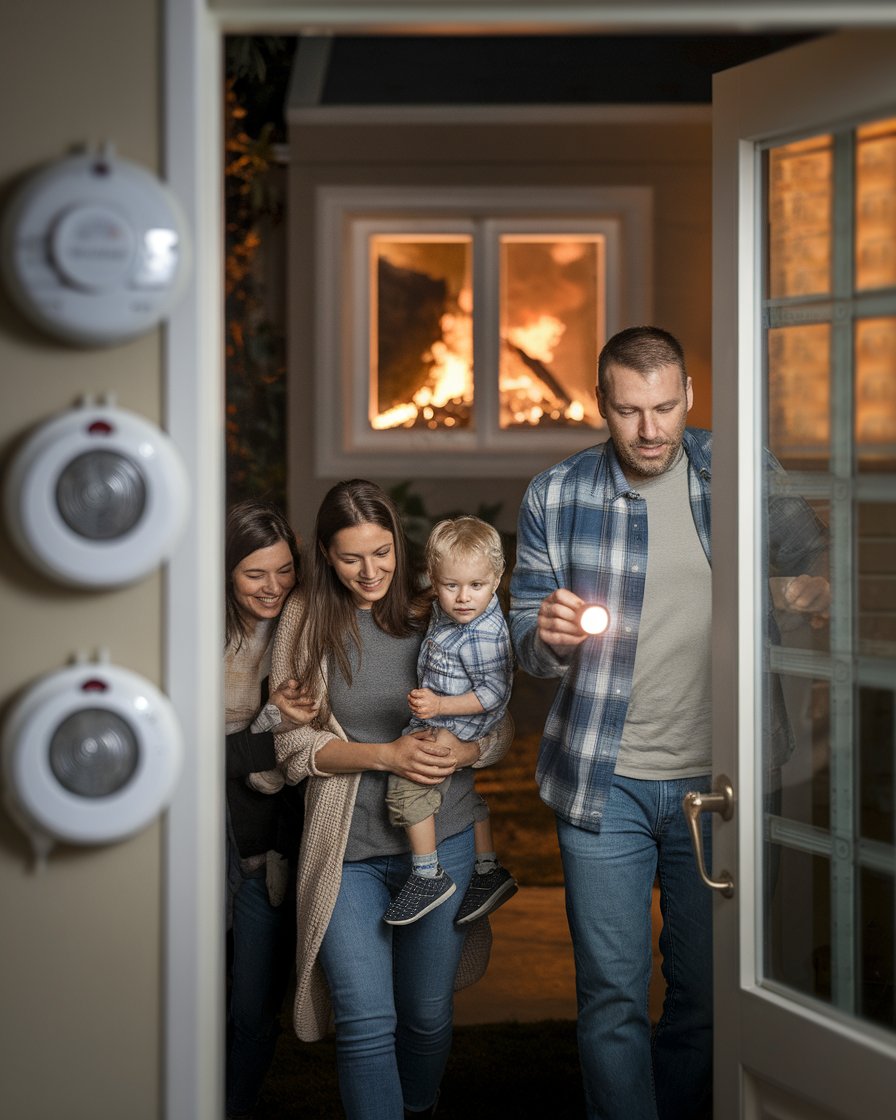Introduction
Smoke alarms are a vital part of protecting your home and loved ones from the dangers of fire. Early detection provided by these devices can mean the difference between life and death, giving you enough time to escape. Having one smoke alarm in every critical area, especially outside each bedroom and on every level of your home, is essential. Smoke alarm installation should follow safety standards, including placing alarms away from kitchens to prevent nuisance alarms. Regularly testing your alarms ensures they are functioning, giving you peace of mind.
The National Fire Protection Association (NFPA) reports that homes with no alarms face significantly higher risks. In fact, five home fire deaths resulted from fires in homes without working alarms. Alarms should be checked often to avoid potential malfunctions, and batteries should be replaced regularly. Smoke alarms in your home need to be maintained properly, and older units should be replaced after 10 years to ensure maximum protection.
Key Takeaways
Homes with working smoke alarms significantly reduce the risk of home fire deaths, providing early warnings that give families valuable time to escape.
Smoke alarms should be installed on every level of the home, especially outside sleeping areas, and should be maintained regularly for optimal protection.
There are two types of smoke alarms—ionization and photoelectric—each detecting different types of fires, making both essential for comprehensive safety.
Regularly testing smoke alarms and replacing batteries or outdated units with models that include 10-year batteries is crucial to ensuring they work when needed.
Homes without functioning smoke alarms face a much higher risk of fire fatalities, making proper installation and maintenance vital for safety.
Strategic placement of alarms, at least 10 feet away from kitchens, reduces nuisance alarms while ensuring early detection in case of fire emergencies.
Understanding Smoke Alarms
Smoke alarms are a critical component of home safety, designed to provide an early warning in the event of a fire. These devices detect smoke particles and sound an alarm, alerting occupants to evacuate quickly. According to the fire department, having working smoke alarms on every level of your home significantly reduces the risk of home fire deaths. In fact, homes with working smoke alarms have three out of five fewer home fire deaths than those without. Installing alarms in every sleeping room and outside each separate room is crucial for proper protection. Regular maintenance, such as testing alarms monthly and replacing batteries as needed, helps ensure these devices function correctly when they are needed most.
The Role of Smoke Alarms in Preventing Home Fire Fatalities
Early Detection and Warning Smoke alarms are crucial in providing early detection of fires, which allows homeowners to react swiftly. These devices sound an alarm as soon as they detect smoke particles, giving residents the valuable time needed to escape before the fire spreads. Homes with working smoke alarms experience significantly fewer fatalities compared to those without them.
Types of Smoke Alarms for Comprehensive Protection Ionization and photoelectric smoke alarms detect different types of fires. Ionization alarms respond faster to fast-flaming fires, while photoelectric alarms are more responsive to smoldering, slow-burning fires. Installing both types, or dual-sensor alarms, in the home offers broader protection from various fire scenarios, increasing the likelihood of survival.
Proper Installation on Every Level of the Home Smoke alarms should be installed on every level of the home, particularly outside each sleeping room and inside bedrooms. Alarms in these locations ensure that even if doors are closed, occupants can still hear the alarm and react. The fire department emphasizes that homes without alarms in these critical areas face a higher risk of fatalities.
Regular Maintenance to Ensure Functionality For smoke alarms to function effectively, regular maintenance is essential. Testing the alarm monthly by pressing the test button, as well as replacing the batteries at least once a year, ensures that the alarm will sound when needed. Homes with non-functional alarms, often due to dead batteries, are at a much higher risk of home fire deaths.
The Importance of Interconnected Systems Interconnected smoke alarms provide the highest level of protection. When one alarm detects smoke, all interconnected alarms in the home sound simultaneously, alerting all occupants regardless of their location. This system is especially beneficial in larger homes, where the sound of a single alarm may not be heard from all areas.
10-Year Battery and Replacement Considerations Newer smoke alarms with 10-year batteries reduce the need for frequent battery changes and help prevent alarms from becoming non-functional due to dead batteries. Additionally, smoke alarms should be replaced every 10 years to maintain optimal performance and ensure safety in the event of a fire.
How Smoke Alarms Work
Smoke alarms operate through two main types of technology: ionization and photoelectric sensors. Ionization alarms are better at detecting fast-flaming fires, while photoelectric alarms are more sensitive to slow-burning, smoldering fires. When smoke disrupts the internal sensors, the alarm sounds, warning occupants to evacuate immediately. Smoke alarms give you an early warning, allowing valuable time to get outside safely. It’s important to install alarms at least 10 feet away from cooking appliances to avoid nuisance alarms. Testing your alarm system regularly is crucial for ensuring they will work when needed, especially in properties with no smoke alarms, where fire deaths happen more frequently.
Types of Smoke Alarms
There are several types of smoke alarms available to protect your home, including battery-operated, hardwired, and interconnected systems. Battery-operated alarms are simple to install and can function during power outages, but the batteries should be replaced regularly. Hardwired alarms are connected to your home’s electrical system, providing a more reliable power source, though disconnected hardwired alarms can become a risk if not maintained. Interconnected alarms offer the best protection since they communicate with one another—if one alarm sounds, they all sound. This system is especially helpful for larger homes, ensuring that everyone hears the alarm in time to get outside quickly in the event of a fire.
Statistics on Home Fire Fatalities
Home fire fatalities remain a major concern, with statistics showing that homes without working smoke alarms are at a much higher risk. The National Fire Protection Association (NFPA) reports that nearly 3 out of 5 home fire deaths occur in properties where smoke alarms were either not present or failed to operate. Smoke detectors are essential to fire safety, as they give you early warning of danger, allowing enough time for escape. Installing alarms on every level of your home and ensuring they are tested regularly can dramatically reduce the risk of death. Additionally, using 10-year batteries can help ensure the alarm remains functional without constant maintenance.
Case Study: The Impact of Smoke Alarms in Reducing Fire Fatalities
A study conducted by the National Fire Protection Association (NFPA) in 2020 highlights the effectiveness of smoke alarms in reducing home fire fatalities. The study revealed that homes equipped with working smoke alarms had a 38% lower risk of fire-related deaths compared to homes without alarms. One particular case focused on a fire that broke out in a single-family home in California. The home had interconnected smoke alarms installed on every level, which alerted the family in time for them to safely evacuate before the fire spread.
In contrast, another case from the same study reported a tragic outcome in a home that lacked functional smoke alarms. A fire caused by an electrical fault led to the deaths of two family members, as no alarms were present to provide an early warning. This comparison emphasizes the critical role smoke alarms play in preventing home fire fatalities, particularly when they are regularly maintained and strategically installed.
Data on Smoke Alarm Effectiveness
Smoke alarms are highly effective in reducing fire fatalities. Research from local fire departments reveals that homes with working smoke alarms have a 38 percent lower risk of fire deaths. Alarms give you early warning, typically sounding the alarm well before the fire becomes life-threatening. This allows homeowners to get outside quickly, ensuring safety. However, one-third of homes lack the proper number of smoke detectors or have units that are disconnected or not maintained. Regularly testing alarms and replacing outdated units with 10-year battery models can significantly enhance home safety and prevent tragic outcomes.
Common Causes of Home Fires
Home fires often result from preventable causes. Cooking is the leading culprit, responsible for a significant portion of reported home fires. Heating equipment, electrical malfunctions, and improper handling of candles and smoking materials also contribute to the risk. Fires in homes can spread rapidly, and without a working smoke detector, the chance of escape becomes slim. Fires in properties with no alarms are particularly dangerous, as they provide no warning. Following fire safety protocols, such as installing smoke alarms away from the kitchen to reduce nuisance alarms and keeping flammable materials secured, is key to minimizing risks.
Installation and Maintenance of Smoke Alarms
Installing and maintaining smoke alarms is essential for keeping your home and family safe from fires. Smoke alarms give you early warning when a fire starts, providing crucial time for you to escape. The National Fire Protection Association emphasizes that homes with working smoke alarms are significantly safer than homes without them. In fact, three out of five home fire deaths happen in properties without functioning smoke alarms. Regular testing and replacing smoke alarm batteries annually, or using models with 10-year batteries, ensures their reliability. Keeping smoke alarms high on a wall or ceiling, as instructed by the manufacturer, can optimize their performance and provide maximum protection.
Proper Placement of Smoke Alarms
Correct placement of smoke alarms is vital to ensure they function effectively. Smoke alarms should be installed on every level of the home, especially in and outside of all sleeping areas. A smoke alarm in each bedroom, along with one outside sleeping areas, helps ensure that alarms are heard, even behind closed doors. Fires can spread quickly, so strategic placement ensures every occupant has enough time to react. For best results, smoke alarms should be installed at least 3 meters (or 10 feet) from kitchens to avoid nuisance alarms caused by cooking. By following these guidelines, homeowners increase their chances of getting early warnings when smoke is detected.
Regular Testing and Battery Replacement
Routine maintenance of smoke alarms is key to their effectiveness. Smoke alarms should be tested monthly by pressing the test button to confirm they are working properly. If the smoke alarm emits a chirp sound, it often signals that the batteries need replacing. Homeowners should replace smoke alarm batteries at least once a year to ensure continued protection. Smoke alarms themselves should be replaced every 10 years to maintain optimal performance. Failure to perform regular checks and maintenance has resulted in preventable fire deaths caused by fires in properties where smoke alarms failed to operate. Proper upkeep guarantees that smoke alarms provide early warnings, allowing families to get outside quickly.
“An ounce of prevention is worth a pound of cure.” – Benjamin Franklin
Benefits of Early Detection
The early detection of fires through smoke alarms can be the difference between life and death in a fire emergency. Smoke alarms give you an early warning, often before the fire has time to spread. This early notification provides precious time for residents to take action, whether it’s grabbing a fire extinguisher, waking up sleeping family members, or contacting emergency services. According to fire administration reports, homes with working smoke alarms have a significantly lower rate of fatalities compared to those without. Ensuring smoke alarms are present in every room, especially outside each separate sleeping area, can maximize the chances of survival.
Swift Response to Fire Emergencies
When smoke alarms sound, they give families the vital chance to respond quickly to fire emergencies. By alerting residents immediately, occupants can make crucial decisions, such as extinguishing the fire if it’s small enough or evacuating before the fire grows. Quick action not only helps to protect lives but also limits property damage. A properly installed smoke alarm, whether in the basement or high on a wall in sleeping areas, ensures families have the opportunity to react before the situation becomes uncontrollable. These alarms act as an early detection system that significantly increases the odds of a safe escape in homes with no prior warning system.
Increased Evacuation Time
Smoke alarms provide extra time for residents to safely evacuate in case of a fire. During a fire, every second counts, and having working alarms means more time to get loved ones out of the house. When smoke alarms are installed outside each separate sleeping area and on every level of the home, including the basement, they can alert families even in the middle of the night when a closed door may block early signs of danger. This extended response time allows people to follow evacuation routes calmly, reducing panic and ensuring everyone can exit the home safely before the fire spreads further.
Conclusion
In conclusion, smoke alarms are an essential tool for reducing home fire deaths and ensuring families have the time needed to safely evacuate. Installing enough smoke alarms in critical areas, such as outside each sleeping area and on every level of the home, is crucial. By following the manufacturer’s instructions and keeping smoke alarms away from kitchens to avoid nuisance alarms, homeowners can ensure their devices work efficiently. Regular testing and replacing the batteries annually are simple steps to ensure alarms remain reliable when needed.
Homes with working smoke alarms have a significantly lower risk of fire-related injuries and fatalities. It is important to remember that smoke alarms need to be replaced every 10 years to ensure their functionality. For those hard of hearing, alarms with strobe lights or vibration features can enhance safety. With early detection, you’ll receive a warning so you can get everyone out quickly, minimizing the devastating effects of home fires.

